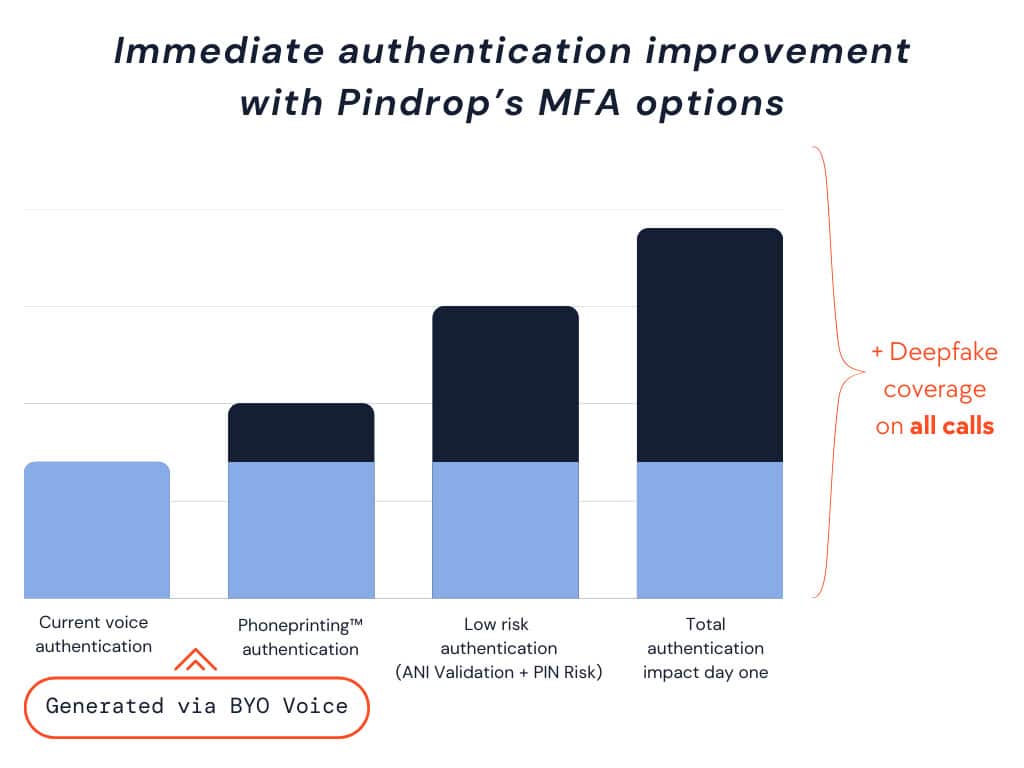Amid the ever-evolving landscape of call center security, customers have long been trapped with legacy voice authentication platforms, where they established a base of voice enrollments powering secure and fast authentication decisions. The End-of-Sale of these legacy on-prem solutions, and anticipated End-of-Support, signals an urgent need for change. The urgency of this change is accentuated by the growing threat from malicious actors creating deepfakes using Artificial Intelligence that can bypass most legacy authentication engines. However transitioning to modern platforms has been hard to manage, primarily because it means leaving existing voice enrollments behind in the migration and starting any progress towards simpler authentication from scratch. That is now history. Starting today, customers can create voice and phoneprint enrollments in bulk from existing audio recordings using Passport’s new feature – “Bring Your Voice enrollments”.
The legacy platform predicament
Traditional vendors, whom you trust to provide adaptable solutions that keep your call center safe from new security threat vectors, have consistently struggled to keep pace with new technologies like deepfake detection, multi-factor authentication, etc. often resorting to integrations to fill gaps. They have also been behind the eight ball in delivering cloud-native, multi-tenant solutions and have limited experience in operating cloud services at large scale and high availability.
Now that traditional voice authentication vendors will no longer be supporting on-premise solutions, customers need to find a cloud-based solution that is proven to meet their scale and high availability requirements and offers protection against deepfakes. Historically, this has required companies to rebuild their voice authentication enrollments which takes several years and negatively impacts the customer experience. There has never been a path to move existing voice bio enrollments to a new product. Recreating new enrollments to be able to use a modern authentication platform has put these customers in a bind.
Embracing the cloud transition with confidence and ease
Pindrop has been a pioneer in facilitating the cloud transition, with over 90% of our customers successfully embracing our cloud platform. We started our cloud journey 4 years ago and today, we handle over 1 Billion calls annually in our cloud platform, operating at the largest scale in the voice authentication industry. We offer the flexibility of choosing between AWS and GCP, ensuring a seamless transition without the complexity associated with traditional on-premise authentication providers.
Traditionally, customers who migrated to a new authentication platform had to request that all of their callers re-enroll their voice on the new platform. This process could take years to complete. Enrollments were re-built one caller at a time. As a result, the customer had to suffer lower authentication rates for years. That’s all changed with the introduction of BYO Voice technology in Pindrop Passport, allowing you to create enrollments in bulk from caller audio recordings. Starting day 1, your consumers can experience a better authentication process.
As the shift to cloud infrastructure becomes inevitable, prompting a reevaluation of authentication strategies, deepfake detection, and adopting a purpose-built multifactor authentication (MFA) should be a central consideration.
Additional benefits our competitors can’t match
Finding a safe and easy transition to the cloud shouldn’t be your only focus when evaluating your inevitable cloud transition. It’s also imperative that you consider advanced features like deepfake detection and customizable MFA solutions tailored to your business needs and regulatory requirements—only Pindrop can offer.
1. Prepare for the latest fraud threat: Deepfake Detection
AI-generated synthetic media, such as deepfakes, are a growing threat to enterprises. Recent University of Waterloo research showed how deepfakes could bypass most voice authentication systems with success rates of up to 99%.
In a noteworthy development, the NSA, FBI, and CISA have come together to release an information sheet on deepfakes, strongly recommending that companies implement a multi-factor authentication (MFA) strategy that includes real-time identity liveness detection.
Pindrop’s detection capabilities, trained on a proprietary dataset of 11M+ audio samples, have undergone rigorous testing and validation, culminating in an exceptional accuracy rate of up to 99.2% across a wide spectrum of attacks, as demonstrated in our response to the University of Waterloo case study.
2. Provide flexibility to your MFA options
We stand out from our competitors by developing all authentication factors in-house. This means seamless integration across our product, from the UI to policy management, reporting, and APIs. We can consolidate factors into a single score for optimized security. Our purpose-built multiple authentication factors offer a robust enhancement to voice bio, providing viable alternatives in regions with voice restrictions such as California and Texas. Even amid regulatory changes, our protection remains reliable.
In addition to importing legacy voice enrollments, we also leverage our advanced Phoneprinting™ and PIN scoring features. This means that right from the outset, new customer authentication and scoring experience surpasses what they previously encountered with other providers.

Why the time to fight deepfake fraud in the cloud is now
The evolving threat landscape in cybersecurity has become increasingly sophisticated, as exemplified by the cyber-attacks that shook the industry in September 2023 – the MGM and Retool attacks. These incidents serve as stark reminders of the critical need for fortified authentication and security measures, especially in call centers.
The MGM attack, characterized by a breach of sensitive customer data, exposed the vulnerabilities inherent in traditional authentication methods. It demonstrated that malicious actors are becoming more adept at exploiting weaknesses in security infrastructure. Importantly, it was the help desk that was targeted, highlighting that a similar attack could easily occur within a call center environment.
Similarly, the Retool attack, which aimed to compromise critical infrastructure, brought to light the looming danger of deepfake attacks on call centers. The attackers behind these incidents showcased an alarming level of sophistication and adaptability, underscoring the urgency of implementing advanced security measures.
Ready to take the first step towards a seamless cloud integration with more protection?
Schedule a demo



